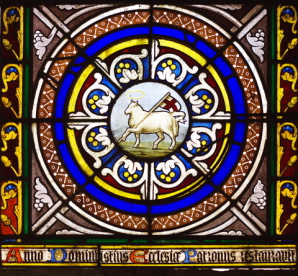
In discussion with conservative Anglicans, Pope Benedict XVI drew up new guidelines in a document known as Anglicanorum Coetibus (or “Groups of Anglicans”) which would make it easier for parishes and larger groups of disaffected Anglicans to convert to Catholicism. The agreement would allow for Anglicans to retain parts of their liturgy as well as establish “personal ordinariates,” a structure similar to dioceses that would give them a measure of autonomy to preserve their traditions.
In early March, the Anglican Church in America, a U.S.-based denomination that broke off from the mainline Episcopal Church, voted to seek entry into the Catholic Church. “The House of Bishops requested the establishment of an Ordinariate in the US as prescribed in the Apostolic Constitution,” that parishes could then join. There are 100 parishes in the ACA.
A member of the Traditional Anglican Communion, the ACA is the largest of several Anglican groups to seek group conversion into the Catholic Church. The United Kingdom branch of the Traditional Anglican Communion (TAC), a worldwide umbrella group of traditionalist Anglican churches, the Anglican Catholic Church of Canada, and the Australian branch of Forward in Faith, both conservative Anglican bodies, also accepted the Vatican’s invitation.
The Australian newspaper reported that in total, as of March 27, petitions had been sent on behalf of 100 parishes in the U.S., 30 in Britain, 26 in Australia, nine in the Torres Strait, and dozens more in Canada, Latin America and Puerto Rico. The newspaper reports that a second raft of British parishes are expected to apply.
Even with such petitions going to the Vatican, it is not certain what shape these ordinariates will take or how many parishes will join them. Shortly after its petition to the Vatican, the Anglican Church in America issued a document for its members explaining the process of reception into the Catholic Church. Once an ordinariate has been established, each of the ACA dioceses and its member parishes will decide whether or not they wish to join the new structure.
The main concern of parishes and individual members is whether their Anglican identity will be “swallowed up” by the Catholic Church rather than preserved as a distinct tradition within the larger church, according to the ACA document.
So far, the only Anglican groups in the U.S. expressing interest in the Vatican’s invitation belong to the TAC, which was the organization that had initially contacted Rome in 2007 about the proposal of coming into full communion with the Catholic Church. Other “continuing” Anglican denominations, most of which had also broken with the mainline Episcopal Church over the ordination of women and other liberal changes, have been ambivalent about or opposed to Anglicanorum Coetibus.
The Anglican Catholic Church, with 135 parishes in the U.S., issued a statement calling the Vatican invitation a setback to the goal of church unity since it made conversion to Catholicism necessary and did not lift the 19th century Roman Catholic ruling that Anglican orders are “null and void.” The establishment of an ordinariate may also draw Individual former Episcopal parishes interested in converting en masse to Catholicism, although observers have noted that there may be more churches converting in the United Kingdom, where there is a stronger Anglo-Catholic movement.
Richard Cimino
Richard Cimino is the founder and editor of Religion Watch, a newsletter monitoring trends in contemporary religion. Since January 2008, Religion Watch is published by Religioscope Institute. Website: www.religionwatch.com.